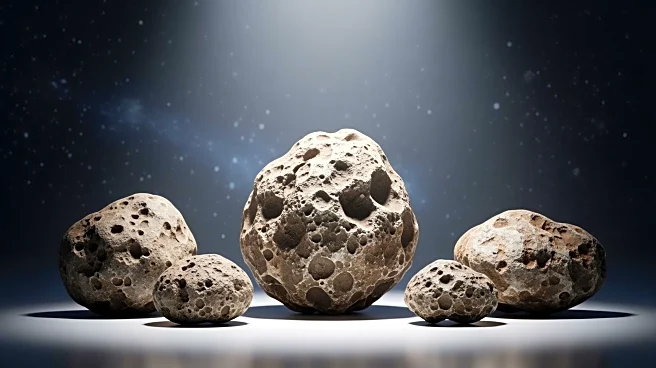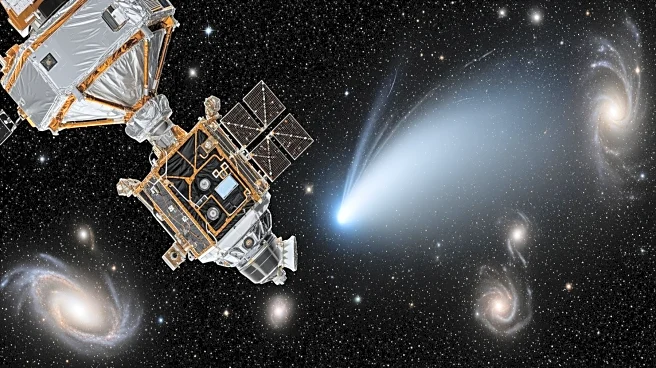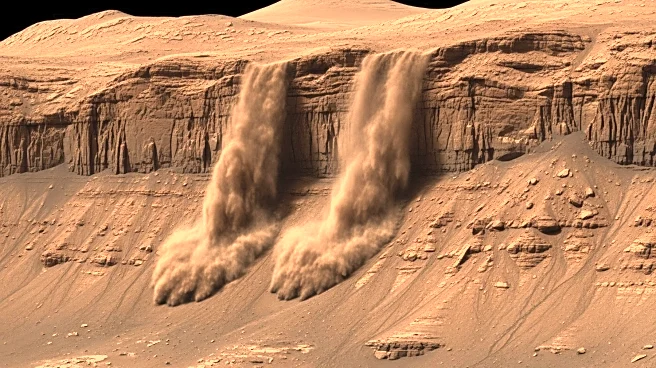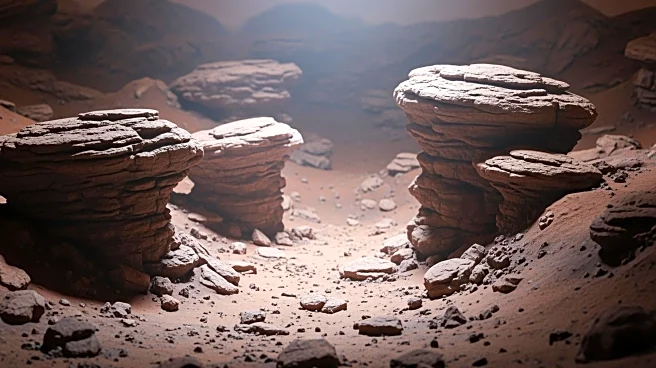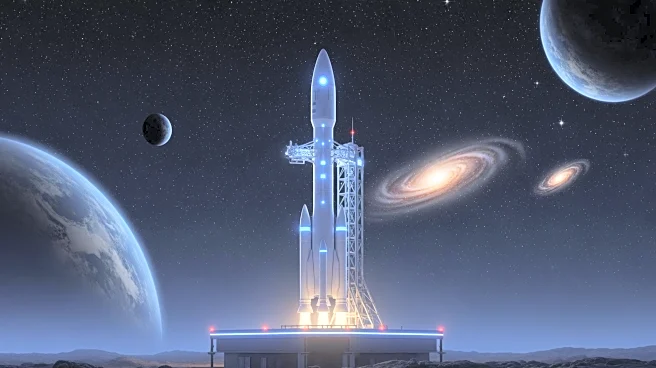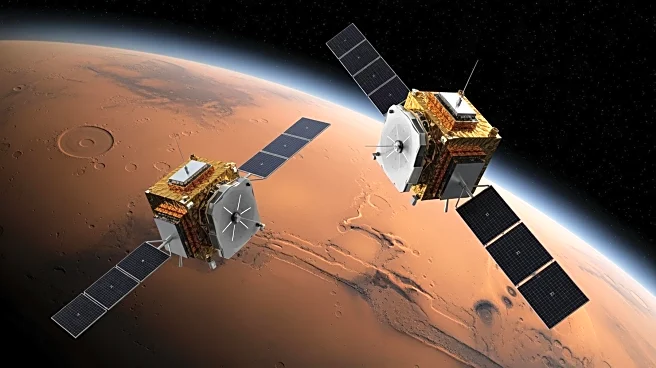What's Happening?
Researchers from the University of Western Australia have studied 3.7-billion-year-old anorthosite rocks from the Murchison region, revealing insights into the formation of the Moon. These rocks, rich in feldspar crystals, share chemical similarities
with lunar samples, supporting the 'giant impact' theory. This theory suggests a Mars-sized planet collided with early Earth, leading to the Moon's creation. The isotopic ratios in these rocks provide evidence of Earth's mantle and crust evolution, indicating continental growth began around 3.5 billion years ago. The study bridges geology and cosmology, offering a tangible link between Earth's crust and the Moon's creation.
Why It's Important?
The discovery of these ancient rocks provides crucial evidence supporting the 'giant impact' theory, which has significant implications for understanding the early history of Earth and the Moon. By establishing a chemical link between Earth and lunar samples, scientists can better comprehend the processes that shaped our planet and its celestial companion. This research not only enhances our knowledge of planetary formation but also contributes to broader scientific fields such as geology and cosmology. The findings may influence future studies on planetary impacts and the evolution of celestial bodies.
What's Next?
Further research may focus on analyzing other ancient rock formations to corroborate the findings from the Murchison region. Scientists might also explore the implications of these discoveries for understanding planetary formation in other parts of the solar system. The study could lead to new investigations into the chemical processes that occur during high-energy impacts, potentially offering insights into the formation of other moons and planets. Additionally, the research may inspire interdisciplinary studies combining geology, cosmology, and planetary science.
Beyond the Headlines
The study of these ancient rocks highlights the interconnectedness of Earth and its Moon, suggesting they are not separate entities but parts of a shared history. This perspective may influence how scientists approach the study of planetary systems, emphasizing the importance of considering celestial bodies as components of a larger narrative. The research also underscores the value of geological studies in uncovering cosmological phenomena, demonstrating how Earth's oldest stones can rewrite the story of our origins.
